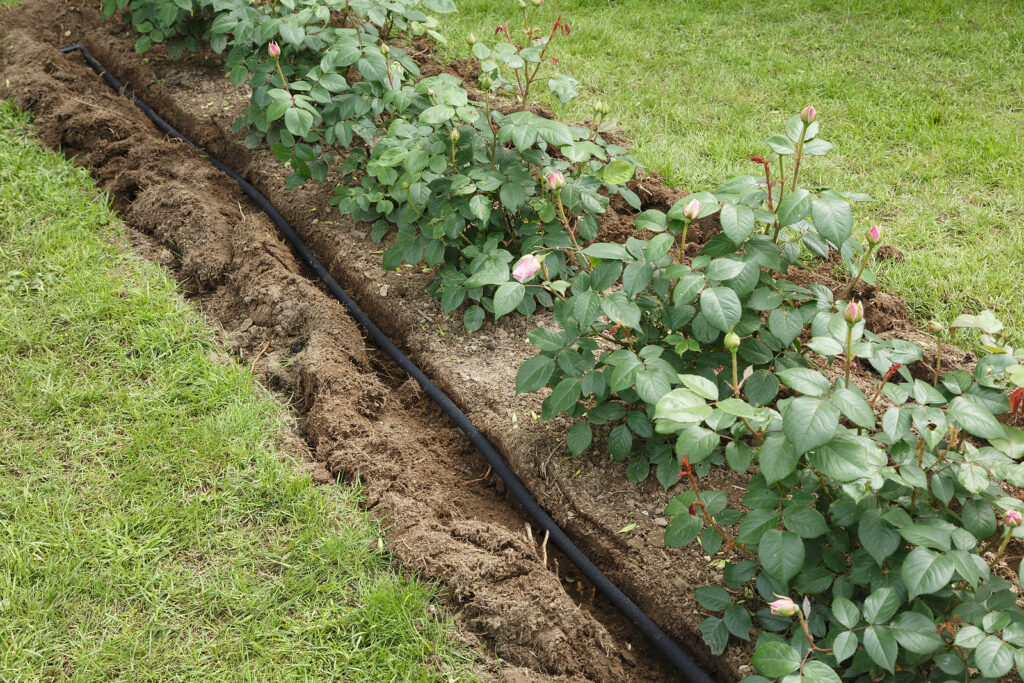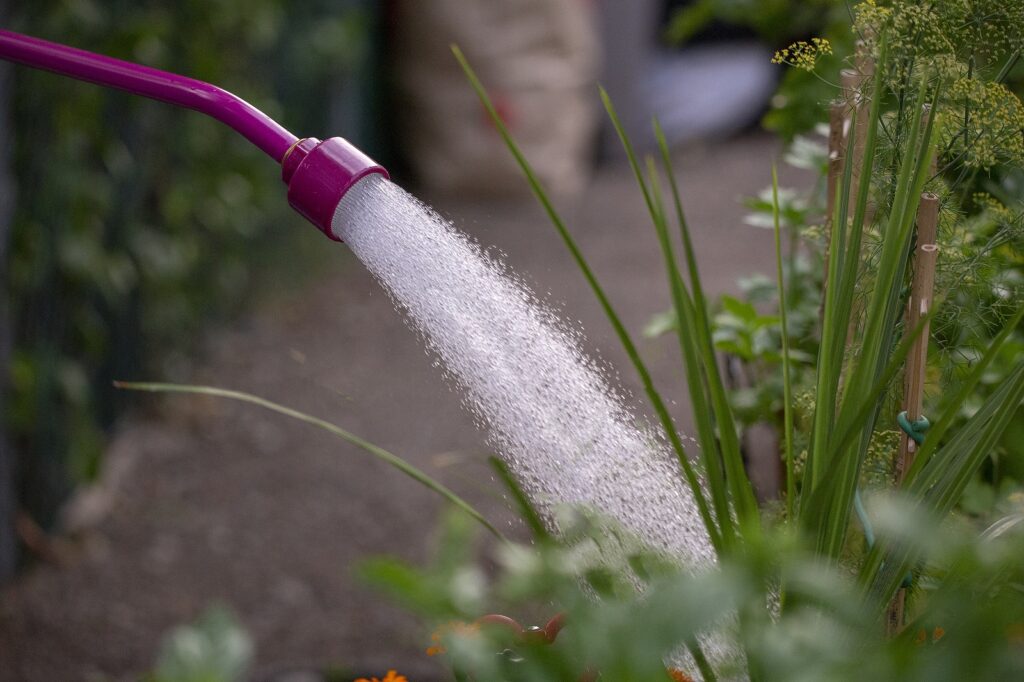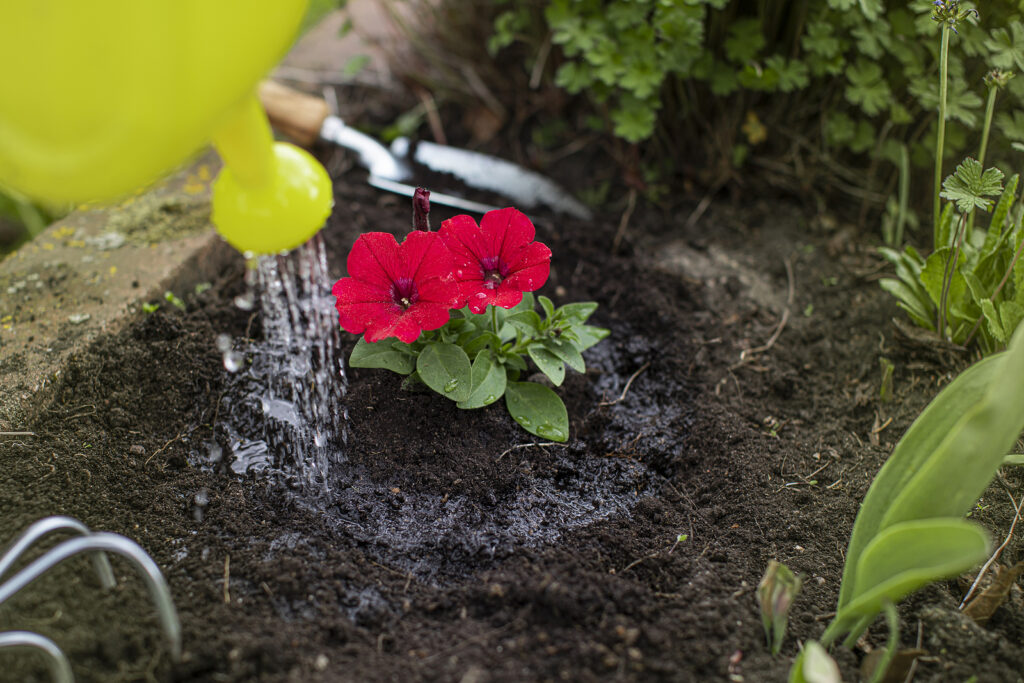There is an art to watering plants: when, where, and how are lessons learned over time. Watering plants requires more understanding of fundamental principles, more judgment, and more skill than any other gardening practice, yet it is perhaps more wrongly done than any other gardening task.
First-time gardeners tend to water frequently and lightly. When plants wilt, first-timer tend to overcompensate and water too much. Watering too much or too little or at the wrong time or wrong temperatures, and so on, can harm plants. The results of poor watering, though often unsuspected and often not associated with the true cause, is frequently serious.
There are a few simple principles to keep in mind when watering. The time spent reviewing the best way to water will save many plants—and save you time as well. Here are important things to know about watering plants:

Simple watering advice
If you have a soaker hose, use it. A soaker hose delivers water slowly. The best way to achieve a thorough deep watering is to let the water soak into the ground over 30 to 45 minutes; a soaker hose set to moderate flow of water will do that. If you don’t have a soaker hose, aim your hose at the base of the plant and let the water trickle for an hour. Mature plants need water to the depth of 8 to 12 inches (20-30cm).
Water only when the soil is dry
Avoid watering until the soil has become dry but not powdery dry. Outdoors when the soil is a few inches to a foot dry, it’s time to water. Water to just beyond the depth of the deepest roots. Indoors it means water the soil in a pot so that it is moist—not sopping wet. This advice is perhaps easier said than done.
For many annuals, perennials, and shrubs the deepest roots will reach to about the same depth the plant is tall out of the ground. Water 2-inch (2.5cm) seedlings to 2½ inches deep; water a 3-foot tall shrub to slightly more than 3 feet (.9m) deep. How much water is this; for a seedling, you can stick your finger in the soil to judge; for a shrub or tree, a slow deep watering will likely do.
For perennials, shrubs, and trees, find an open spot near the plants and use a trowel to dig down 12 inches. By early mid-summer, the soil should be moist at 12 inches deep otherwise plants may suffer in hot, droughty weather.

Don’t keep the soil continuously wet
An experienced gardener knows when to water by the appearance of plants, the surface of the soil, or the appearance of the soil in a flowerpot. Plants commonly wilt if underwatered; they can also wilt if overwatered. Let the surface of the soil dry between waterings. If an outdoor plant is wilted in the morning, it almost certainly needs water; a plant that is wilted in the evening after a hot day, may or may not need water. Watering is important, but don’t let plants sit in water or wet soil.
Avoid light, frequent watering
Avoid light, frequent, or surface sprinkling of outdoor plants and lawns. Such applications of water are worse than giving none at all because the moistened stratum of soil is very shallow. Shallow watering encourages root development near the soil surface. Plants that are shallow-rooted cannot withstand hot, dry spells if sprinkling is discontinued.
Water soft-stemmed plants more often
Soft-stemmed plants such as annuals and perennials need watering more often than woody shrubs and trees. The root-system of most soft-stemmed plants is shallower than the roots of woody plants. Water actively growing soft-stemmed, large-leaved plants, and succulent-leaved plants abundantly; water small-leaved plants less abundantly. Water loss through leaf surfaces is greater for large-leaved plants than small-leaved plants. A safe rule for watering plants during the growing season is to water at the first suggestion of wilting.
Amount of foliage and watering
Plants with fewer leaves need less water than plants with more leaves. Plants that have been cut back, that have lost foliage for any reason, need less water than fully leafed out plants. In spring, water less often until new foliage begins to develop. In autumn, water less often as leaves drop. Young plants, seedlings, or cuttings and newly potted plants need to be kept slightly on the dry side; this will allow root hairs to develop; root development is indicated by the growth of new leaves and shoots. Overwatering young plants can lead to yellowing and dropping leaves and sometimes to failure.
Soil texture and watering
The quantity and character of soil should influence water applications. Loose and warm soils dry out more rapidly than do heavy, clay soils. Loose soils need watering more often; clay soil retains moisture—it needs water but should be kept wet. Water enough to moisten the soil; the soil should not be soggy hours after watering.

Water early at the base of plants
It is almost always best to water early in the day and at the base of plants—not overhead. This allows water to soak into the soil before nightfall. Water at the base or within the dripline of the plant; avoid overhead irrigation on a regular basis. This will assure that any irritation water that hits leaves will evaporate before night; this will help curb the growth of fungal diseases. (Occasional overhead watering to clean leaves of dust in summer is fine.)
Usually, the only times when watering may be safely done late in the day is during clear weather in summer when there is ample air circulation and relatively low humidity. Avoid watering on bright days during the middle half of the day in summer; that can produce scalding of leaves unless leaves are adequately shaded.
An inch of water a week
As a rule, your garden needs 1 inch of water a week. How can you tell how much water you’ve applied? Dig down and check the soil. An inch of water will moisten the soil to a depth of about 12 inches (30cm). As a reference, 1 inch of rainfall equals about a half-gallon per square foot.
If you are watering with a sprinkler, set out a cake pan or other shallow, a flat container where the sprinkler water will hit. Position the pan midway between the sprinkler and the farthest point that water falls. measure the water in the pan to determine how much water is being added to the garden.















